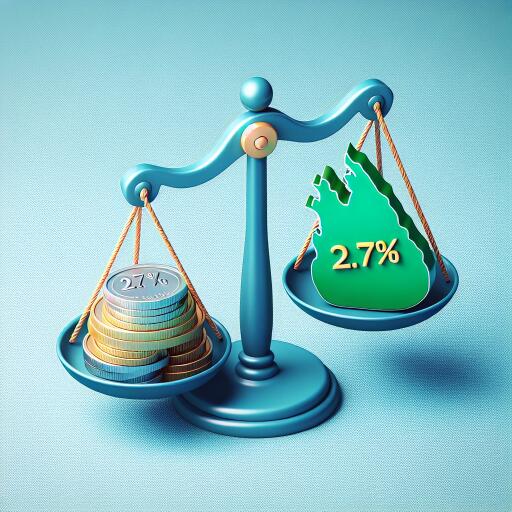Sri Lanka Inflation Slightly Up to 2.7% in April
In April, Sri Lanka experienced a slight uptick in consumer price inflation, increasing to 2.7 percent from 2.5 percent in March. This change reflects subtle shifts in the economic landscape of the country, as indicated by the National Consumer Price Index (NCPI). The NCPI, a crucial measure for tracking broad retail price inflation, offers insights with a reporting delay of 21 days, providing a snapshot of the economic movement within the nation.
April saw a notable rise in food prices, which surged to 3.3 percent from March’s 5 percent. This increase aligns with the broader trends impacting the cost of living, further influenced by changes in non-food prices. Specifically, non-food inflation ascended to 2.3 percent from a mere 0.7 percent previously, partially due to the reduced impact of lower household power tariffs implemented in March.
Despite the incremental rise in April’s inflation, analysts remain optimistic about the economic outlook. The prevailing view is that inflation will continue to be subdued in the near term, thanks in part to expectations of stable global oil prices and contained local demand pressures. This attitude is buoyed by projections that keep inflation within manageable limits, specifically within the Central Bank of Sri Lanka’s (CBSL) target inflation range of around 5 percent.
However, there is a cautious note among some financial experts regarding potential short-term increases in inflation, primarily driven by the fluctuation in food prices. “Inflation might increase slightly because of higher food prices in the months ahead. So, we might see inflation hitting 4-4.5 percent but nothing to worry too much about,” said Dimantha Mathew, head of research at First Capital. This perspective suggests a watchful optimism, recognizing possible variances while maintaining confidence in the overall stability of the economic environment.
The recent movement in inflation rates occurs against the backdrop of Sri Lanka’s economic recovery efforts following a severe financial crisis that saw a record-high inflation rate of 70 percent in September 2022. Such an extreme indicator of economic distress underscored the challenges facing the nation. Nevertheless, there are now signs of stabilization and recovery, attributed in part to the support extended through a $2.9 billion International Monetary Fund (IMF) programme.
Looking ahead, the economic forecast for Sri Lanka is cautiously positive, with expectations of achieving a 3 percent growth rate in 2024 after enduring two years of economic contraction. This prospective turnaround paints a picture of resilience and gradual recovery, laying the groundwork for a more stable and prosperous future for Sri Lanka’s economy.
As we continue to monitor these economic indicators, it’s clear that careful management of inflation rates and adherence to strategic financial planning are key to maintaining the momentum of recovery. With the ongoing support of international partners like the IMF and the dedication of local policymakers, there’s a hopeful path ahead for Sri Lanka’s economic resurgence.
